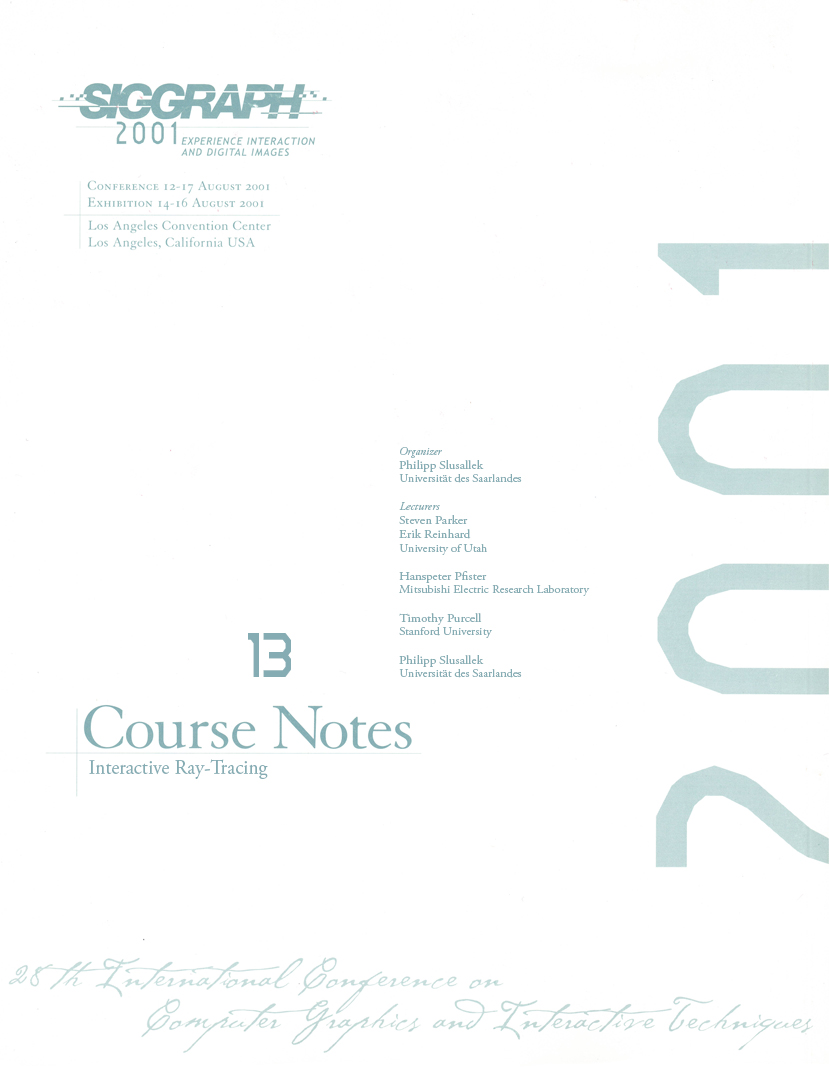“Interactive Ray-Tracing” by Slusallek, Parker, Reinhard, Pfister and Purcell
Conference:
Type(s):
Entry Number: 13
Title:
- Interactive Ray-Tracing
Organizer(s):
Presenter(s)/Author(s):
Abstract:
Prerequisites
This course is designed for anyone who is interested in the future of highly realistic interactive graphics. For best results, attendees should have a decent understanding of the ray-tracing algorithm and the triangle rasterization pipeline of current graphics hardware. Knowledge of distributed, parallel, and SIMD processing is helpful but not required.
Topics
Brief review of the ray-tracing basics. Comparison of ray tracing with the triangle rasterization pipeline. Highly parallel ray tracing on supercomputers. Interactive ray tracing on a PC. Optimizing ray shooting through image-based rendering. Data structures and algorithms for dynamic scenes. Different approaches to designing hardware architecture for real-time ray tracing.
Description
Interactive ray tracing is becoming practical, and it offers a number of benefits over the traditional rasterization pipeline. This course describes implementation and optimization issues for ray tracing on hardware ranging from single PCs to networked clusters and supercomputers. It also reviews recent work to implement ray tracing in hardware as an alternative to current graphics chips.





